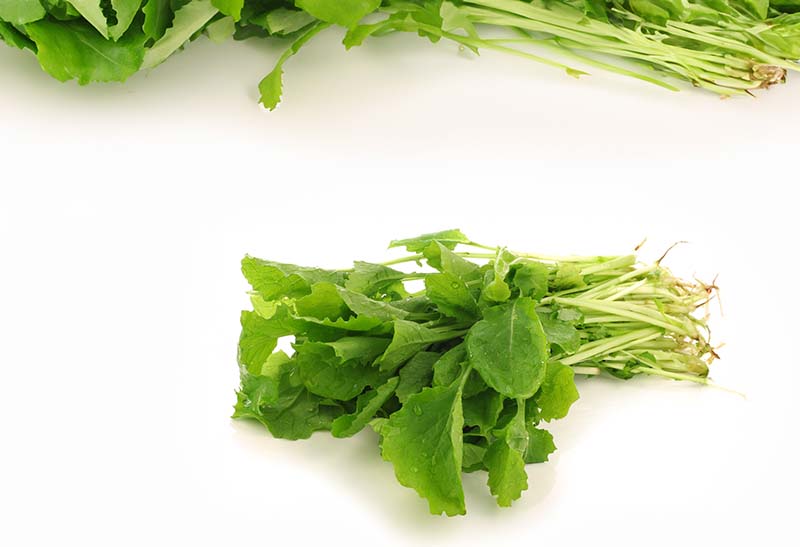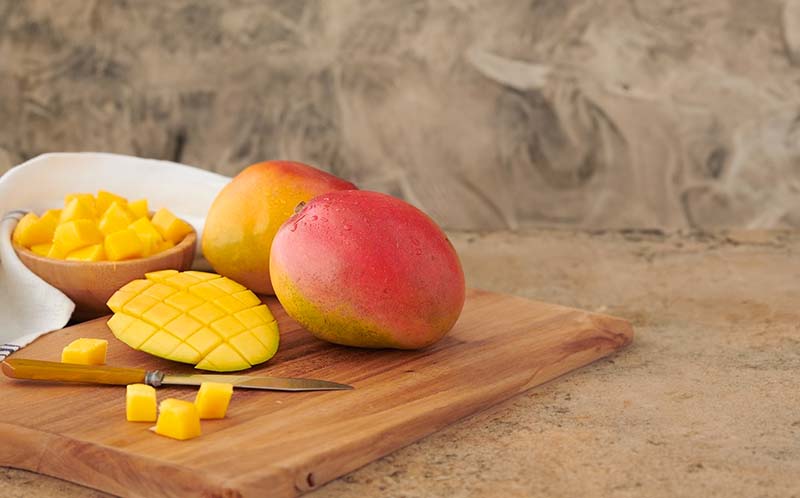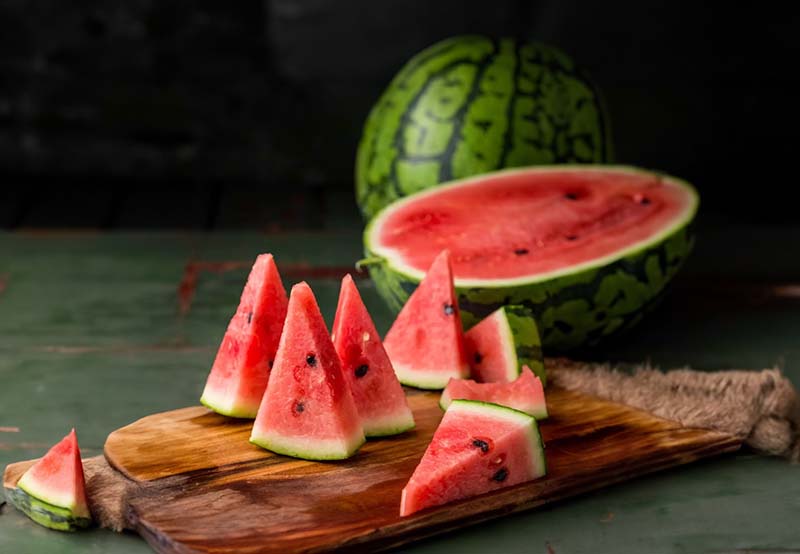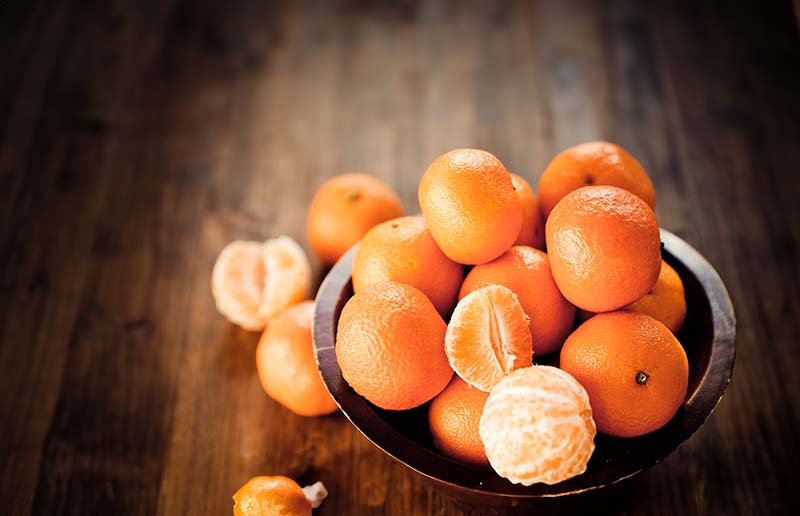Vitamin A is an important nutrient that plays a key role in supporting vision, strengthening the immune system and ensuring the normal functioning of major organs. Its importance also extends to facilitating reproduction, promoting growth and supporting overall development. In the context of food sources, it is imperative to focus on foods high in vitamin A to meet these important health requirements.
1. Introduction to Vitamin A
Vitamin A stands as a key player in the realm of vitamins and essential micronutrients. As an indispensable component, it significantly contributes to overall health and is available in natural food sources and dietary supplements.

1.1 Benefits of Vitamin A
Vitamin A is crucial for our bodily functions, offering a range of benefits:
- Enhances vision.
- Lowers the likelihood of developing night blindness.
- Strengthens bones and teeth.
- Encourages muscle growth.
- Amplifies the immune system’s effectiveness.
- Plays a role in cancer prevention.
- Supports the reproductive system’s health.
- Aids in lung development in unborn babies.
1.2 Vitamin A Deficiency: Causes and Consequences
A deficiency in Vitamin A arises when the body doesn’t get enough of this vital nutrient, leading to various health issues, such as treatable night blindness. This condition can be prevented by including Vitamin A-rich foods in your diet and supplementing if necessary.
Causes of Vitamin A deficiency:
- Poor nutrition.
- Liver conditions impacting vitamin storage.
- Illnesses affecting fat and vitamin absorption, such as cystic fibrosis, celiac disease, chronic diarrhea, chronic pancreatitis, bile duct obstruction, and deficiencies in zinc or iron.
- Certain surgeries involving the intestine or pancreas.
- Alcohol dependency.
Consequences of Vitamin A deficiency:
- A major cause of blindness in less developed countries, though rare in developed nations due to adequate dietary intake.
- Increases susceptibility and mortality from infections like measles and diarrhea.
- Linked to higher anemia rates and mortality in pregnant women, while also adversely affecting fetal growth.
- Can lead to skin problems, including hyperkeratosis and acne.
- Some groups, like premature infants, individuals with cystic fibrosis, and pregnant or breastfeeding people in underprivileged areas, face higher risks of Vitamin A deficiency.
2. Foods High in Vitamin A
Vitamin A, a vital nutrient for our health, is abundantly found in a variety of foods including fruits, vegetables, meats, and dairy products. Incorporating these foods into your daily diet is an effective way to meet your daily vitamin A needs. Here’s a list of foods that are particularly high in Vitamin A, recommended for daily consumption:
2.1 Cooked Beef Liver
Beef liver is one of the most concentrated sources of vitamin A. This is because animals, like humans, store vitamin A in their liver. A 3-ounce serving of pan-fried beef liver provides a whopping 6,582 micrograms (mcg) of vitamin A, which is 731% of the daily value (DV).

2.2 Cod Liver Oil
Cod liver oil is not only nutritious but also a potent source of vitamin A. Just 1 tablespoon of cod liver oil delivers 4,080 mcg of vitamin A.
2.3 Baked Sweet Potato
A single baked sweet potato offers approximately 1,403 mcg of vitamin A, fulfilling 561% of the daily requirement, according to The National Institutes of Health Office of Dietary Supplements (ODS).
2.4 Cooked Carrots
Carrots are a fantastic source of vitamin A, with a single serving providing 184% of the daily value. They are also packed with antioxidants, beneficial for cellular health and prevention of diseases like cancer and heart disease.

2.5 Black-eyed Peas
A half-cup serving of black-eyed peas contains 13% of the recommended daily intake of vitamin A. Recent studies also suggest a correlation between consuming beans and a reduced risk of heart disease and hypertension.
2.6 Cooked Spinach
Spinach is abundant in vitamin A, which helps regulate oil production in skin and hair, preventing acne. Vitamin A is also essential for the growth of tissues, including skin and hair.
2.7 Broccoli
Broccoli is another nutritious vitamin A source, with a half-cup providing 60 mcg (7% of DV). This same amount of broccoli has only 15 calories and is rich in vitamins C and K.

2.8 Fresh Sweet Red Pepper
Half a cup of raw sweet red bell pepper offers 117 mcg of vitamin A (13% of DV) and is also high in vitamins C, B6, and folate, with only around 19 calories per serving.
2.9 Dried Apricots
For a vitamin A-rich snack, try dried apricots. Ten halves contain 63 mcg of vitamin A (7% of DV), along with fiber and antioxidants.
2.10 Pumpkin Pie
Pumpkin pie, rich in beta carotene like other orange vegetables, contains 488 mcg of vitamin A per slice (54% of DV). Pumpkin is also a good source of antioxidants like vitamin C, lutein, and zeaxanthin.

2.11 Tomato Juice
A three-quarter cup serving of tomato juice provides 42 mcg of vitamin A (5% of DV). Tomatoes are also a good source of vitamin C and lycopene, both antioxidants.
2.12 Herring
Herring is rich in vitamins, including vitamin A (84 IU/100 g), vitamin D, and vitamin B12. This fish also provides minerals such as potassium, phosphorus, and selenium.
3. Vegetables High in Vitamin A
Focusing on vegetables high in Vitamin A is crucial for maintaining good health. This vitamin is essential for various bodily functions, including vision, immune function, and skin health. Here are some vegetables packed with Vitamin A:
3.1 Baked Butternut Squash
Butternut squash, when baked, becomes not just a delightful dish but also a Vitamin A powerhouse. One cup (205 grams) of baked butternut squash contains 1,140 mcg of Retinol Activity Equivalents (RAE), which accounts for 127% of the Daily Value (DV).

3.2 Cooked Kale
Kale is a food known for providing significant amounts of Vitamin A. A cup serving (118 grams) provides 172 mcg RAE, covering 19% of the DV.
3.3 Cooked Collard Greens
Collard greens are another nutrient-rich vegetable. One cup (190 grams) of cooked collards delivers a substantial 722 mcg RAE of Vitamin A, equating to 80% of the DV.
3.4 Cooked Turnip Greens
Turnip greens are an excellent source of Vitamin A. A single cup (144 grams) of cooked turnip greens contains 549 mcg RAE, which is 61% of the DV.

3.5 Cooked Swiss Chard
Swiss chard, with its dark, leafy greens, is not only tasty but also a Vitamin A-rich vegetable. One cup (175 grams) of cooked Swiss chard has 536 mcg RAE, making up 60% of the DV.
3.6 Raw Romaine Lettuce
Romaine lettuce, a common salad ingredient, is surprisingly high in Vitamin A. Half a cup (47 grams) of raw romaine lettuce provides 205 mcg RAE, or 23% of the DV.
4. Fruits High in Vitamin A
Fruits play a pivotal role in a balanced diet, offering essential fiber and vitamins. Particularly, orange and yellow fruits are excellent sources of beta-carotene, a vital antioxidant and precursor to vitamin A. Here are some fruits that are notably high in Vitamin A:
4.1 Mango
Mangoes are not only delicious but also a rich source of vitamins A, C, minerals and fiber. A medium-sized mango can provide about 75% of the daily vitamin A requirement. Mangoes also contribute to reducing the risk of various cancers and other significant health issues.

4.2 Cantaloupe
Cantaloupe is a nutrient-dense fruit offering potassium, calcium, magnesium, phosphorus, zinc, and vitamins C, A, and B9 (folate). One cup (160 grams) of cantaloupe provides 270 mcg of Retinol Activity Equivalents (RAE), which is 30% of the Daily Value (DV).
4.3 Grapefruit
Grapefruit is a valuable source of vitamin A and C. It’s rich in antioxidants, aiding in the prevention of chronic diseases like heart conditions, cancer, and eye problems. Grapefruit also enhances immunity.
4.4 Watermelon
Watermelon, a sweet and hydrating fruit, is a good source of vitamin A. It plays a significant role in boosting immunity, skin health, and maintaining good eye health.

4.5 Papaya
Papaya is abundant in vitamin A, beneficial for eyesight and skin health. It helps protect the cornea and prevents retinal degeneration. Papaya can be enjoyed in various ways, including in breakfast dishes, smoothies, or desserts.
4.6 Apricot
Fresh apricots are packed with vitamin A, crucial for eye health, immune system support, and skin protection. Regular consumption of apricots can reduce the risk of age-related eye issues.
4.7 Tangerine
Tangerines contain a considerable amount of vitamin A. About 100 grams of tangerine provides approximately 14% of the recommended daily intake of vitamin A.

4.8 Nectarine
Nectarines, high in fiber and low in calories, are a healthy fruit choice. A single nectarine (140 grams) contains 29 mcg RAE of vitamin A, which is 3% of the DV.
4.9 Guava
Guava, while low in calories, offers a substantial amount of fiber, vitamin A, C, and several other crucial micronutrients.
4.10 Passion Fruit
Passion fruit is a nutrient powerhouse, particularly rich in fiber, vitamin C, and vitamin A. It is essential for maintaining good vision, protecting the eye’s surface, and is effective in treating eye dryness.

5. Daily Requirement of Vitamin A
Vitamin A is an important health nutrient that is often measured in International Units (IU) on the Nutrition Facts label. However, the Institute of Medicine now recommends using micrograms (mcg) of Retinol Activity Equivalents (RAE). This change is due to varying absorption rates between preformed vitamin A and provitamin A carotenoids. Following the Food and Drug Administration’s (FDA) updated labeling regulations, starting from July 2018, large companies will switch from IU to mcg RAE when listing Vitamin A content.
- Recommended Dietary Allowance (RDA): For adults aged 19 and older, the RDA is set at 900 mcg RAE for men (which is about 3,000 IU) and 700 mcg RAE for women (approximately 2,333 IU).
- Tolerable Upper Intake Level (UL): This is the highest amount of daily vitamin A intake that is unlikely to cause adverse health effects. The UL for vitamin A from retinol sources is pegged at 3,000 mcg of preformed vitamin A.
It’s essential to understand these measurements for proper vitamin A intake. Exceeding the UL can lead to health issues, particularly from preformed vitamin A (found in animal sources and supplements), as it is more readily absorbed and stored than beta-carotene from plant sources.
6. Conclusion
In conclusion, understanding the importance of “Foods High in Vitamin A“ is essential for optimal health, particularly for eye health and immune system support. This article has highlighted a variety of Vitamin A-rich foods, from leafy greens and colorful fruits to animal products. We encourage you to share how these foods have influenced your health. For more health and wellness insights, visit our Biosculpture blogs. We’re dedicated to providing you with the latest and most reliable information to support a healthier, more fulfilling life.


